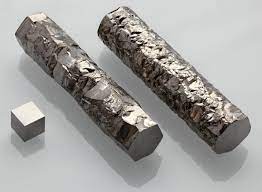History.
The element zirconium boasts a rich history, intertwined with scientific curiosity and technological advancements. Its journey began in 1789, when a German chemist named Martin Heinrich Klaproth stumbled upon an intriguing mineral while analyzing zircon gemstones. This mineral, later named zirconia, held a hidden secret: a previously unknown element.
Over the next several decades, scientists like Jöns Jacob Berzelius and Humphry Davy attempted to isolate this element, facing challenges due to its similarity to other elements. Finally, in 1824, Berzelius successfully extracted zirconium in an impure form. The pure metal, however, remained elusive until the early 20th century, when advancements in technology allowed for its isolation.
This remarkable story highlights the ongoing quest for scientific knowledge and the power of collaboration. It also serves as a testament to the fascinating properties of zirconium, which have since found applications in diverse fields, from medicine to nuclear energy.
Usage.
Zirconium compounds are used in ceramics, abrasives, lamp filaments, jet engines and space shuttle parts. In the medical field, zirconium dioxide, also known as zirconia, is applied as a material for dental and surgical implants due to its biocompatibility and durability.
-
Implants: Zirconium dioxide, also known as zirconia, is used in a variety of medical implants due to its biocompatibility, strength, and durability. It is commonly used in hip and knee replacements, dental implants, and other orthopedic devices.
-
Cladding: Zirconium is used as cladding for fuel rods in nuclear reactors because of its low neutron absorption and resistance to corrosion. This property helps to ensure the safe and efficient operation of nuclear power plants.
-
Refractory materials: Zirconium compounds are used in refractory materials, which are heat-resistant materials used in furnaces, kilns, and other high-temperature applications.
Some of the benefits of using zirconium are:
-
Zirconium is a very strong and durable material, making it resistant to wear and tear. This is why it's often used in applications that require these properties, such as:
-
Zirconium dioxide is used in hip and knee replacements, dental implants, and other orthopedic devices because it can withstand the stress and strain of everyday use.
-
Zirconium is used in cladding for nuclear reactors and refractory materials for furnaces and kilns because it can withstand high temperatures and harsh environments.

